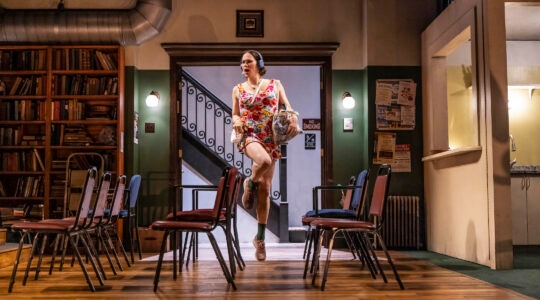According to that most scientific of sources, Wikipedia, the Rhine-Ruhr metropolitan area in Germany is the fourth-largest metro area on the Continent — eclipsed only by such marginally European burgs as Moscow, Istanbul and London.
In other words, Rhine-Ruhr is the industrial heart of the country lately in the public consciousness as Europe’s economic engine. A drive through this West German sprawl reveals the scale of German enterprise — and a devotion to the local beer, Kolsch, that borders on obsessive.
Cologne, the region’s largest city (though not its capital; that honor goes to Dusseldorf), is arguably the best seat from which to view contemporary Germany. While cosmopolitan Berlin has the edge on postwar novelty, Cologne feels quintessentially German, comfortably reconciled with its complicated past.
That past is notably present in Cologne — from the cobbled lanes of its Old Town and the walls of its 14th-century university, the region’s oldest, to the Jewish Museum under construction amid excavations of the medieval Jewish quarter.
Memorials throughout this city commemorate a Jewish past dramatically extinguished in the horrors that began on Kristallnacht. Only one synagogue survived the war: the Roonstrasse Synagogue, a Moorish-style temple rebuilt in the late ’50s.
A Jewish population in a city that has been regenerated to nearly 5,000 has brought new life to the venerable synagogue, which also houses Cologne’s Jewish community center. Around the city, you’ll see plaques noting where synagogues once stood, memorials in the Jewish cemetery, and streets named for perished rabbis.
But it’s the excavation underway on the city’s central square that represents Cologne’s new identity as a prime destination for Jewish historical tourism.
Cologne’s modern history dates to the Roman Empire, and the Jewish community flourished in medieval times. First, a mikveh from that era was first unearthed, and further exploration revealed a rich Jewish arhttp://www.stadtgarten.de/chaeological past amid the Roman ruins in central Cologne, vestiges that will be incorporated into a Jewish Museum on the spot.
This newest of Cologne’s many museums will sit across from Cologne’s iconic Rathaus (town hall), a decision that gave many here pause. The Rathaus positively drips with history, from its 16th-century façade to the wood-inlaid corridors where the Hanseatic League once met. But the Jewish Museum project is now widely embraced, and the city offers Friday tours of the so-called “Archaeological Zone.”
For now, the place to see Jewish history is at the Stadtmuseum, Cologne’s municipal institution and a good starting point for city exploration. Most foreigners don’t realize that Cologne, not Berlin, is Germany’s museum powerhouse, with major collections numbering more than a dozen major and counting.
The Museum Ludwig, for instance, is home to the world’s third-largest Picasso collection and a showcase for modern art. All the major aesthetic currents of the 20th Century are here: European surrealists, American pop artists, Russian avant-garde painters, Chagall, Ernst, German Expressionists, and the conceptual pioneers of recent decades.
If the Ludwig is the city’s MoMA, the Wallraf-Richarz is its Met. The oldest museum in Cologne (but in a sparkly new building) boasts treasures from the 13th through 20th Centuries, with particular strengths in German and Flemish masters, and the largest collection of Impressionist and post-Impressionist art in Germany.
Exactly one hundred years ago, the Wallraf-Richarz made a splash with a groundbreaking exhibit of Modernism, from Gauguin and Van Gogh to Picasso and Munch. This August, the museum will revisit that event with a centennial retrospective, “1912 – Mission Moderne.”
But while its historic core remains the pride of Cologne, a young generation has been quietly reclaiming once-forgotten districts.
Those include the Rheinauhafen, a massive new development of the city’s Rhine River waterfront. Where abandoned granaries once stood, ambitious city planners envisioned a lively mix of lofts, boutiques and galleries. Three distinctive “crane towers,” buildings cantilevered over their own watery reflections, give a modern look to the low-slung skyline.
While it’s hardly undiscovered, the city’s Belgian Quarter — with streets named for Low Country cities, Antwerp to Maastricht — is another lively destination. Here you’ll see all the tropes of modern-day hipsterdom (artisanal bakeries, vintage bike shops) alongside traditional beer gardens and the city’s loveliest park, the Stadtgarten.
The Stadtgarten is also a concert venue and café, hosting more than 400 events a year, so it’s always worthwhile stopping by. You might catch a poetry reading or a throbbing club night with German elektronika, though most concerts feature live jazz, with the likes of Ornette Coleman stopping by.
Out in the garden, a flowery oasis from the urban grid, the kitchen serves Slow Food-style seasonal cuisine and mulled “gluhwein” in winter. Like so much in Cologne, it’s a pleasing blend of Old World and new.
The New York Jewish Week brings you the stories behind the headlines, keeping you connected to Jewish life in New York. Help sustain the reporting you trust by donating today.




